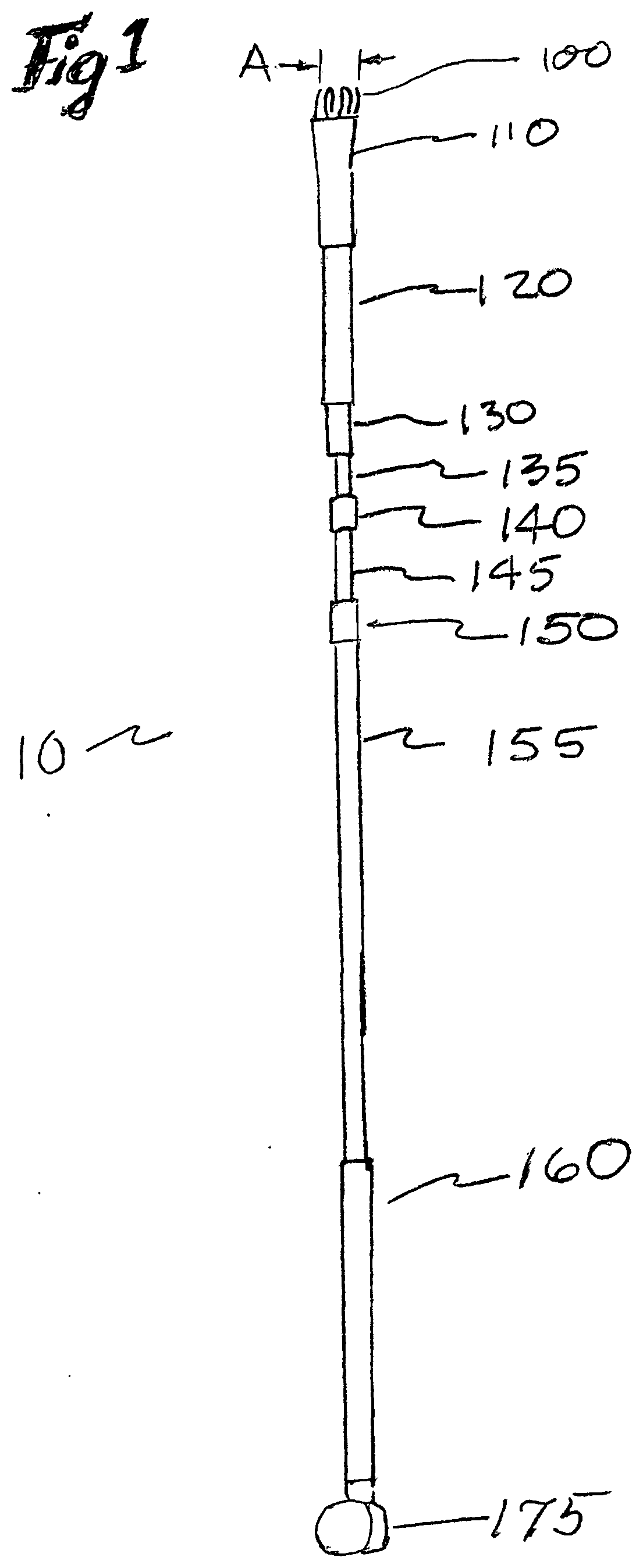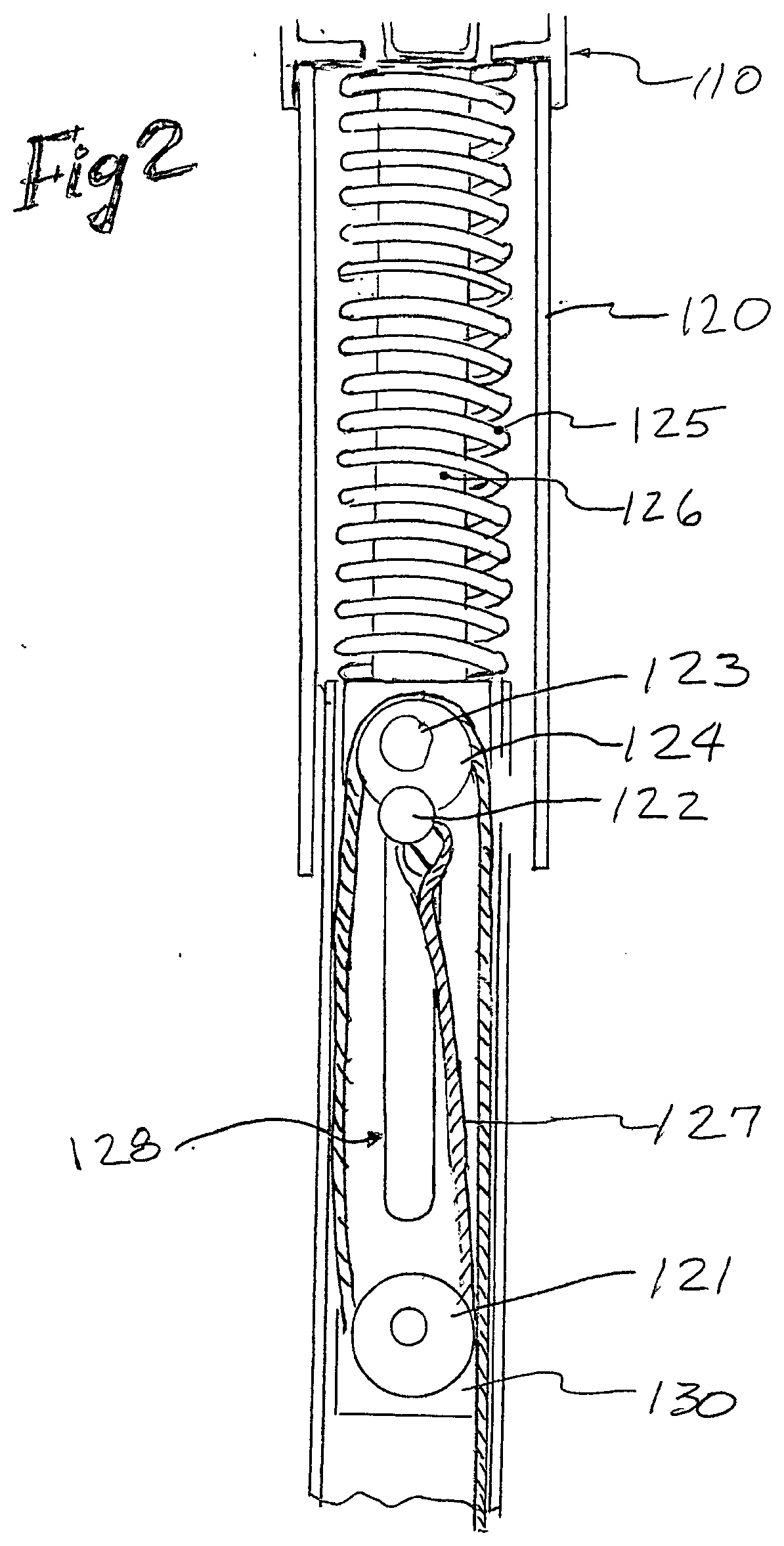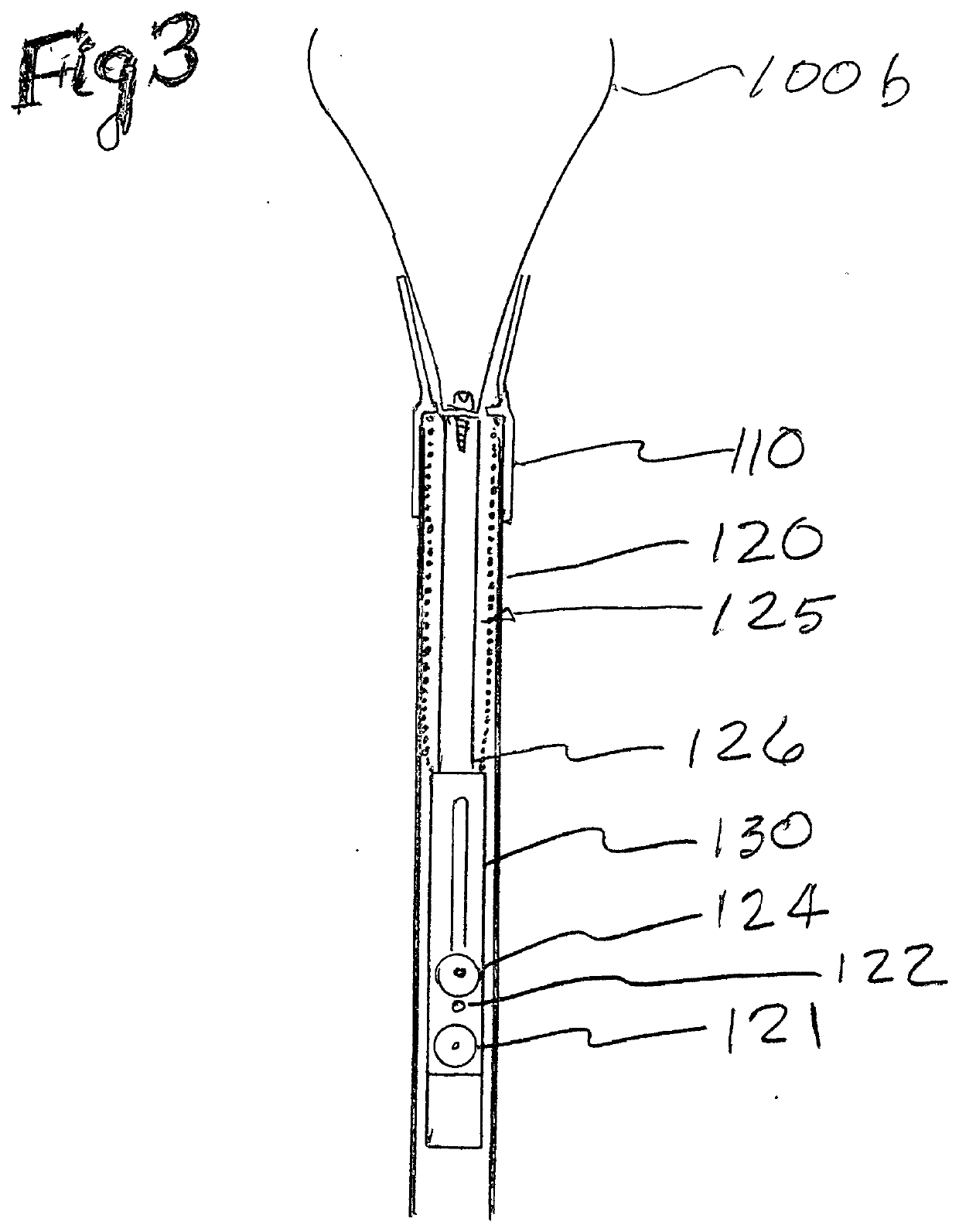Another problem is the adjustability of the
handle to reach light bulbs at varying distances.
Another problem is light bulbs are subject to separation from their
metal base if the user applies too much torque while installing.
Another problem is not providing adequate assurance that the device will hold the bulb without the chance of dropping the bulb and breaking it.
Another problem is that many light bulb changing devices do not provide the ability for the user to actuate the mechanism from both the proximal (bottom
handle) or distal (upper gripping end) ends.
The patent teaches that the rods are adjustable to reach light bulbs at different heights, but the mechanism to lock the rods at a desired height is cumbersome.
Therefore, the user can only adjust the rod at certain heights, which is burdensome if the light bulb is at a height that does not correspond to any of the positions available on the rod.
Said fingers are limited in adjustment range to a single size bulb.
Further, the mechanism to actuate the gripping fingers is only actuatable by the user from the proximal end opposite the fingers, which creates difficulty inserting a replacement bulb into the fingers, due to the necessity of opening and closing the fingers from the proximal end.
The means for closing and opening the fingers is by use of a
thumb nut and feed screw only actuatable at the distal, or finger end of the device thereby rendering actuation of the fingers at an elevated location difficult or impossible.
The fingers are only actuatable at the distal, or finger end of the device, thereby rendering actuation of the fingers at an elevated location difficult or impossible.
Further, the geometry of the fingers and collar do not provide a
large range of adjustment.
The problem which this invention does not solve is that the grappling means or gripping fingers, when in the most extended position, have very low gripping force due to the very small amount of leverage applied to the fingers.
Although this light bulb changer allows the user to bend the arm to engage light bulbs at different angles, the light bulb changer does not allow the user to adjust the handle to different heights.
Further, the light bulb changer taught by Negley does not allow the user to adjust the mechanism to fit differently sized light bulbs.
However, the device taught by Maki, by having a fixed rod, does not allow the user to adjust the rod to different heights.
This is disadvantageous to the user, because the cup is not adjustable to engage different sized light bulbs.
In addition, the increasingly prevalent use of aluminum instead of
brass in the base of the bulb has tended to increase problems caused by the bending or other malfunction of the base.
A common fault is that the bond between the glass envelope and the base is broken.
Grudgefield identifies that a twisting force is necessary to screw or unscrew the bulb, and he identifies the problem of breaking bulbs or separating them from their Edison screw base but he does not identify a solution of controlling the torque applied to the bulb to prevent such an occurrence.
DuBois also identifies the need for friction between the fingers and the bulb but does not identify a solution to control the torque of the fingers.
The patent does disclose the use of a chain to be pulled by the operator to grip the bulb such that the operator must pull the chain and turn the device to screw or unscrew the bulb simultaneously which is a difficult operation for some individuals.
If the adjustment is made incorrectly then the sliding collar must be readjusted, possibly multiple times. This presents a cumbersome process for removing a light bulb.
Further, the disclosed device is unduly complicated creating a very expensive execution.
 Login to View More
Login to View More  Login to View More
Login to View More 


